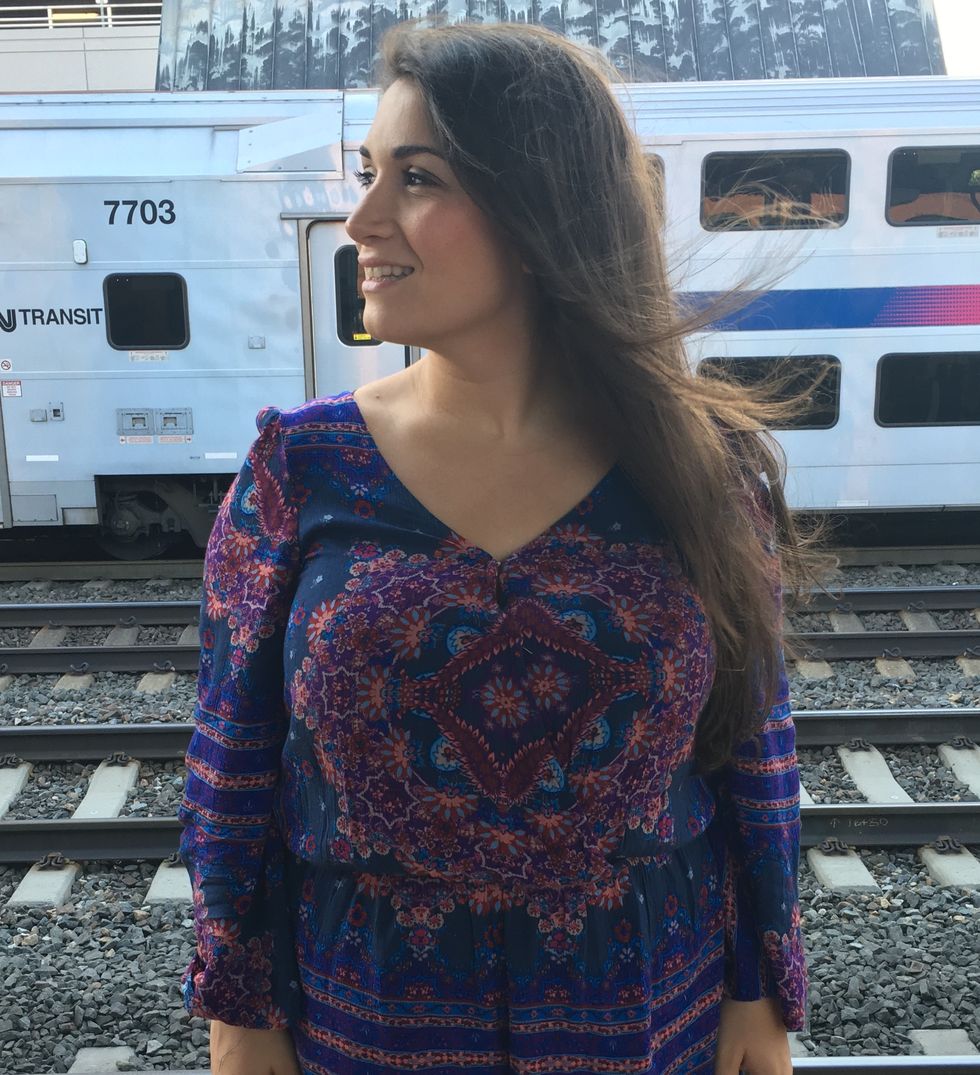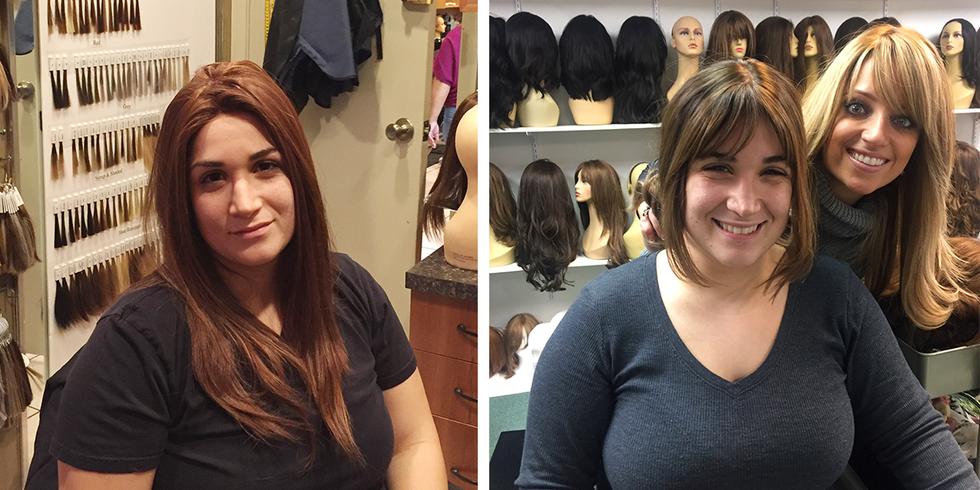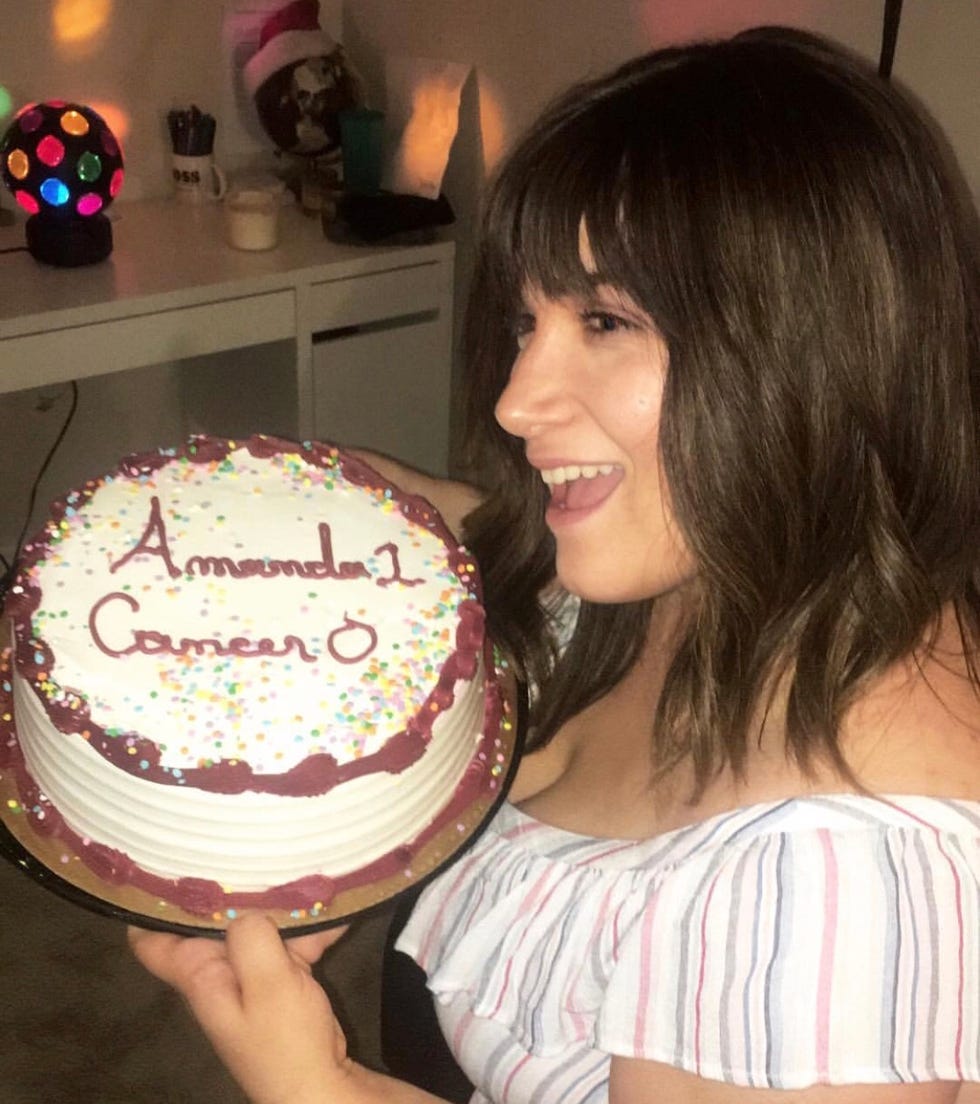Products You May Like
More than 50 percent of women will experience noticeable hair loss in their lifetime—a change that can affect much more than their appearance. In the above mini documentary, ELLE.com explores this staggering statistic through the stories of women who’ve been there before, including Hearst executive producer Amanda Kabbabe. After being diagnosed with a rare form of ovarian cancer at 24 years old and losing her hair to chemotherapy, Kabbabe was desperate to feel like herself again. In the process, she met Charlene Aminoff, owner of Gali’s Couture Wigs, and learned about the life-changing experience that led Aminoff to open her shop. Now, Aminoff is dedicated to providing hair coverings for anyone who needs them and has extended her services to those featured in the video and more.
Below, Kabbabe delves deeper into her own journey, including how she first connected with Aminoff and what it was like to lose—and then regain—an essential part of her identity.
I was 24 years old when I learned I was going to lose all of my hair. I had just been diagnosed with an extremely rare type of ovarian cancer, undergone major surgery, and had months of chemotherapy ahead of me. Days before I was set to start, I received a devastating call from a nurse, who explained I would lose everything during treatment: the hair on my head, my brows, my lashes.
For better and for worse, my hair has always been a huge part of my identity. At 12 years old, I was bullied over my “bushy brows”; later on, I was envied by women who longed for a “bold brow” like mine. Learning that my treatment would render me hairless was one of the most heartbreaking realizations of my life. The mere thought of my friends and family having to see me like that was gut-wrenching; it felt like I was putting my illness on display.
After wallowing, it was time to take charge. I wanted to get a wig, so that no one would ever have to see my bald head. One silver lining was that my insurance would cover what they referred to as a “cranial prosthesis,” though as you would expect from American insurance companies, I was given a very limited list of approved vendors to choose from.
Even so, my sister launched into action. She called every wig shop on that list to set up appointments. But each experience was more devastating than the last. Wigmakers would tug on my head, roll their eyes when I’d get emotional, and respond to my concerns of discomfort with some condescending version of, “Well, of course it’s not comfortable, it’s a wig.”
I’d never felt more defeated. Ugly. Lost. It felt like a part of me was being taken away. How much of a woman could I be if I didn’t have my hair?
I was crying about everything to my best friend, Ricki, an Orthodox Jewish woman, who then told me that people in her faith often wear wigs, and not only could nobody tell, but nobody cared—it wasn’t something to be ashamed of. She would send me photo after photo of Jewish women donning wigs—gorgeous, long brown locks; bright blonde highlights; vibrant redheads. After seeing dozens, I had to ask, where the heck are people getting these wigs from?
That’s when she gave me the information for a Long Island shop called Gali’s Couture Wigs. I called to make an appointment and visited a few days later. Initially, I had some hesitations. All of my other wig shop experiences had been awful. What would make this one different? The shop wasn’t on my insurance list. Would I even be able to afford a wig from there? I’m not Jewish. Would they even accept me?
But on Dec. 4, 2017, I walked into Gali’s Couture Wigs for the first time and met the owner, Charlene Aminoff. She welcomed me with open arms, quite literally, giving me a hug. As soon as I began to tell her about what I’d been through, I welled up. But Charlene made two things very clear to me: First, she also was wearing a wig, and it was a choice she made, something she was proud to do. Second, she was in this business for a very specific reason, and it all started when Charlene had a life-changing experience of her own.
On July 26, 2010, Charlene and her husband, Jonathan, were vacationing at their summer home in Miami Beach, a spot they’d bring their children to every year. At the time, Charlene identified as an Orthodox Jewish woman but, as she told ELLE.com, says she felt like she didn’t abide by her faith in the “correct way,” instead living an “outlandish lifestyle [with] jet-setting, yachts, fabulous, phony, obnoxious fake parties.” That day in July, she and Jonathan took their boys to the beach, leaving their two-year-old daughter, Gali, with their nanny. When Charlene left for the shore, she saw Gali safely sleeping on a lounge chair by the pool.
An hour later, as they returned to the house, they heard noise and commotion and ran toward the scene. They saw a man standing in the pool, holding the body of a young girl. When the man turned around, Charlene immediately realized it was her own daughter, Gali. Charlene remembers, “The tips of her nails were purple. She was a limp rag doll in his arms.”
Jonathan, who was also a volunteer medic, immediately grabbed Gali and began performing CPR while Charlene watched helplessly. As Jonathan continued to attempt to resuscitate their daughter, he yelled that she was in full cardiac arrest. Charlene, in ultimate disbelief, looked around. She saw a blue pashmina shawl on a lounge chair and instinctively grabbed it, yelling out in Hebrew. “I promised God, for the rest of my life, I would serve him his way, no longer on my terms,” Charlene told ELLE.com. “I would cover my hair. I would wear a wig. I would dress modestly, head to toe.”
Charlene remembers wrapping her head in the shawl, and in that exact moment, Jonathan found a pulse. Hours later at the hospital, Gali’s health was fully restored. Doctors were shocked, telling Charlene, “You don’t understand that your daughter is a complete miracle.” Sitting there with her scarf wrapped around her head, Charlene knew that from that moment, she would remain devoted to God.
But she wasn’t going to wear that blue pashmina forever. When it came time to shop for wigs, Charlene, unfortunately, had a very similar experience to mine. The wigs were outrageously priced, the shop owners were insensitive, and she never walked away feeling good about the experience. She was determined to create a place where people could not only buy wigs at an affordable price but also have a great time doing it.
I kept going to Charlene’s store, and as I spoke to some of her other clients, I learned more and more about the multitude of reasons women choose to wear wigs. While many suffered hair loss that was out of their control—whether from chemotherapy or alopecia or trichotillomania—just as many chose to wear a wig because of their religion, culture, or for cosmetic purposes. The more time I spent at the shop, the more I realized wearing a wig wasn’t a punishment. It was a privilege.
I left Gali’s Couture Wigs that first day with three wigs and a giant weight lifted off my chest. Even though she wasn’t on the approved list at the time, Charlene’s team figured out my insurance for me. I was in the second week of my first round of chemo, and the following week, my hair began to fall out. It started slowly but then suddenly, hair was absolutely everywhere: all over my sheets, my clothes, my bathroom. You don’t really realize how much hair is on your head until it starts to fall out; the process was agonizing.
On Dec. 17, 2017, two weeks after I bought my Gali’s wigs, I decided to finally shave my head, my way of taking control of the situation. Looking in the mirror at my receding hairline, I realized that I was holding on to nothing. The attachment I had to my hair was superficial. It didn’t actually represent anything.
My friends made the shaving process as enjoyable as possible. I sat on a stool in the garage and blasted Taylor Swift as I went through every emotion imaginable. I cried, I laughed, all of it. When it was finally over, I felt free. I learned—and finally, truly believed—I am so much more than my hair.

Amanda is the Executive Producer of Video and TV Development at Hearst, where she produces and directs video content across all of Hearst Magazines titles. Outside of work, Amanda is a cancer advocate, certified “cool auntie,” and Taylor Swift enthusiast.




